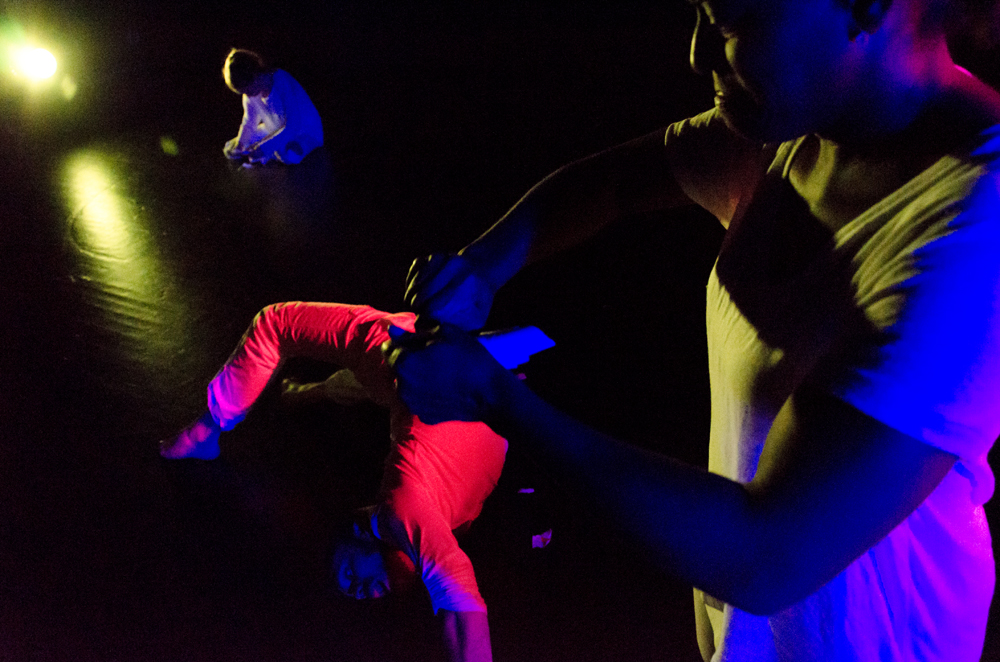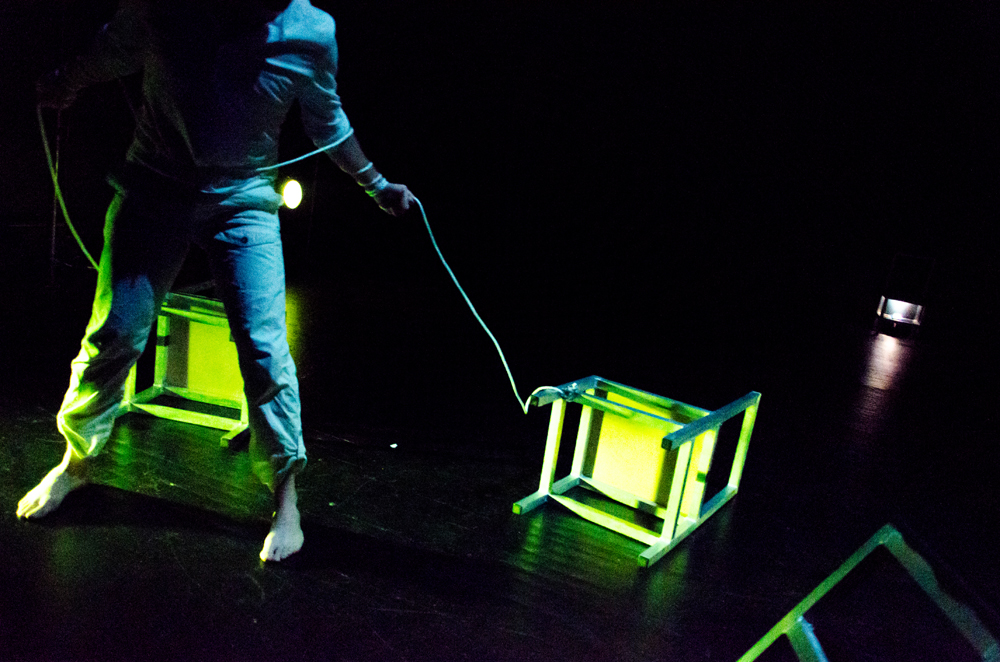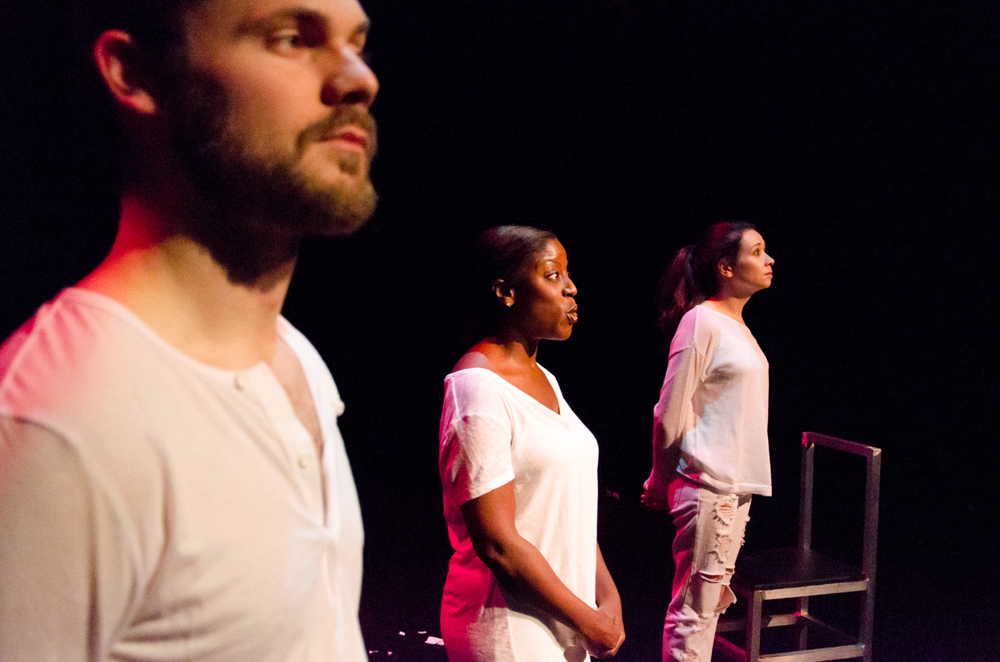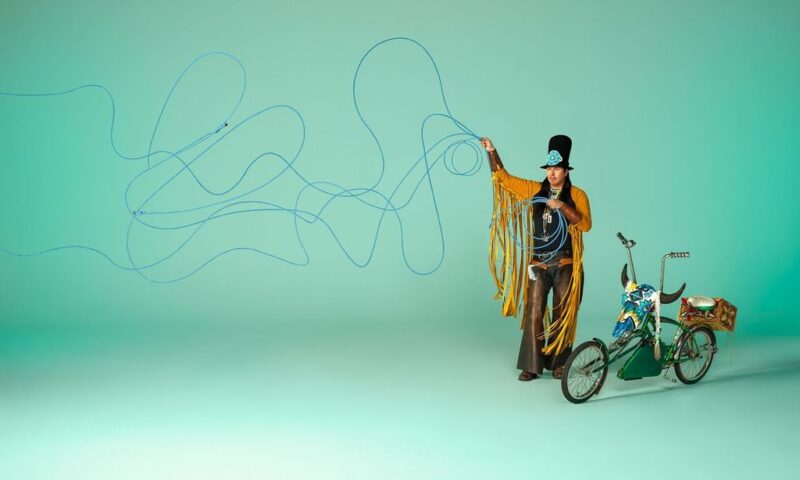Nancy Murray reviews 4.48 Psychosis at Theatre Project in Baltimore
Iron Crow Theater’s production of 4.48 Psychosis is a brief glimpse into the darkness of suicidal depression. Playwright Sarah Kane personally struggled with depression and ultimately committed suicide shortly after completing the play so she never saw it in production. If she had, I would like to think that she would have been very pleased with this expression of her work, now showing at the Theatre Project through the weekend.
More like poem without characters or scenes or stage directions, the production, directed by CCBC Theater Professor Ryan Clark, is not produced as homage to Kane and her tragic end, nor is it produced to make a moral statement about suicide or depression, though in less capable hands it could be put forward as either. Clark, instead, chose to focus on the fact that this is an active piece of theater and he grasped the theatrical potential of the piece and brought forward something beautiful out of the darkness. For Clark, it was important that the troubled playwright be honored, but even more important that the experimental work of art be respected for its own merit.
The black box stage was minimally set with four silver chairs and a rope. Costumes were empty canvases of white. All was awash with a soft film of red light. The three performers, Nick Horan, Katie Keddell and Che Lyons, moved about slowly before the start of the play. Their silent expressions and mannerisms set the tone for sadness but when the play delved in deeper it revealed the anger, guilt, frustration and fear that consumed the characters.
The audience is given no back story to show how these characters came to be where they are psychologically and there is no neat ending explaining it all. We are simply dropped into the middle of the mind of a person, or people, about to break. We listen as their friends and therapists ineffectively administer advice and encouragement. We watch as the patients speak without ever being really heard.
The choreography of movement, directed by Nick Horan was captivating from start to finish. The piece was as much a dance as it was a play. The characters struck out, writhed and flailed at times and then trudged robotic and trance-like through other moments. It was a visual depiction of the mental and emotional struggle that ricochets throughout the bodies of the deeply depressed.
Clark produced a sound design that was hauntingly simple – drops of water, vibrational sound and a maddeningly persistent metronome ticking off the seconds offered tremendous support to the theme and aesthetic of the piece.
The only prop was a rope which seemed an obvious choice in a play about suicide but the way the rope is used as a lifeline, a shackle, a tightrope, a tie to the weight of longing and, yes, even a noose is brilliant.
The lighting design by Alec Lawson was subtle with soft pulsing of reds and washes of green and indigo. Projections on the silver panel curtains framed the production with whimsical images of normalcy that were turned upside down and lit on fire. Water came in beautiful drops and currents as the characters drown in their shame and sadness, numbers fell randomly. The effect was interesting and lovely but not distracting as projections can sometimes be.
The characters alternated convincingly between desperate patients as they fight for a life without suffering and their therapists who are unable to say or do anything meaningful. There is a moment in the play when a character breaks the fourth wall and begs the audience to say something to him. It is an uncomfortable moment for all involved as the audience wonders if they are really supposed to speak and, if so, what are they expected to say? In this way, the company manages to convey the helplessness of those outside the mind of a depressive.
In another scene, the characters use the rope to flog themselves with such convincing guilt and shame that it hurt to watch.
After stating that the characters have no desire for death (“no suicide ever does”) the playwright closes with this appeal to the audience –
“It is myself I have never met whose face is pasted on the inside of my mind. Please – open the curtains.”
With that, the lights fade and many in the audience are left with a desire to try.
The play is running through the 18th of October with performances on Wednesday through Sunday. More information is available here.
Author Nancy Murray is a writer, theater director, and arts critic.
* Photos by Zachary Z. Handler









